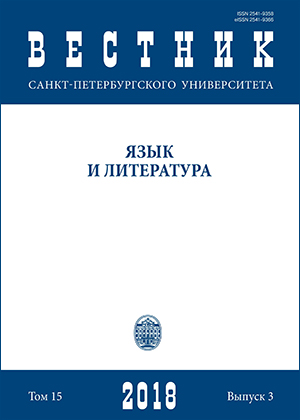Folk and literary code in the love line of the novel “Wretched Nicanor”
DOI:
https://doi.org/10.21638/spbu09.2018.301Abstract
T he literature approaches the first and second parts of the novel “Wretched Nicanor” as a work based on the facts of the biography of the author and on the traditions of the Russian and European literature. The central story of the novel is the story about the hero who saves beautiful girl. The courtship of the hero represents a model of a courteous novel, but it is expressed in the language of the sentimental literature. At the same time, the folk themes, images and situations are used in the description of the love stories: the characters meet the true and false helpers, they overcome obstacles; Aneta, like a bride in a fairy tale, is in a kind of the world of death where she is waiting for the bridegroom; Nicanor has to take actions that are interpreted as tests for the groom. Though the fairy-tale “code” is the basis of the plot, it is a failure. For example, Anete is opposed to Eleanor, who is pretty and wise. Her function is to be a rival and an assistant. Eleanor allows us also to see the comic episodes of Nicanor’s gallantry. T he fiance, the knight, the sensitive hero of sentimental literature, the adventurous hero of the Greek novel — the author of “Wretched Nicanor” look for the literary forms adequate to describe life. This search shows that the ready models have been experienced by the writer of the late XVIII century as a form which is not able to describe and explain the endless process of human being.
Keywords:
Wretched Nicanor, gallant novel, romance, adventure novel, fairy tale, theme of fate, Russian literature of XVIII century
Downloads
References
References
Downloads
Published
How to Cite
Issue
Section
License
Articles of "Vestnik of Saint Petersburg University. Language and Literature" are open access distributed under the terms of the License Agreement with Saint Petersburg State University, which permits to the authors unrestricted distribution and self-archiving free of charge.






